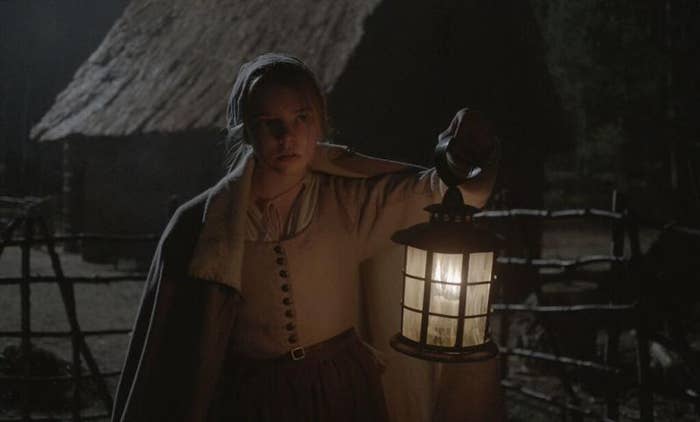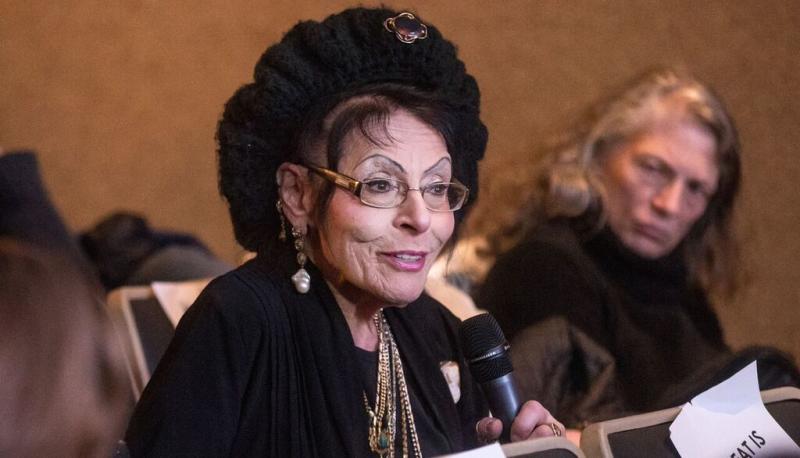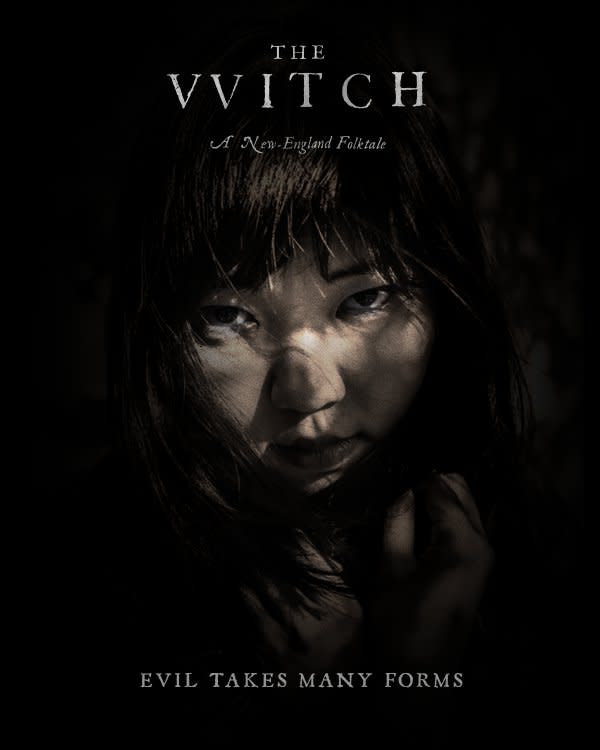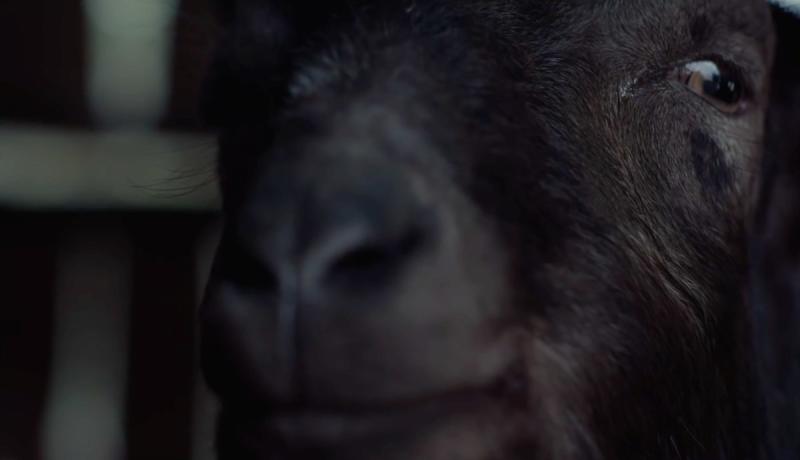
"Anyone could be a witch," Vin Diesel once said to me. I didn't think I'd be thinking so much about Vin Diesel, of all people, on my trip to Salem, Mass., but there I was, at a special screening for the new horror film The Witch, with those words ringing in my head. In fact, "Everyone could be a witch" was the thought that crossed my mind as I came to the realization that I was low-key surrounded by real witches.
We had just seen The Witch—for a third time for me, actually—at the local theater, CinemaSalem, which boasts "real butter" on their popcorn (a coincidentally important detail to the film, you'll see), followed by a Q&A with the director Robert Eggers, the star Anya Taylor-Joy, and a panel of witch experts. It’s one thing to watch it back home in New York then leave the screening and go back to normal life, but this third time really proved to be the charm, watching the movie in a city rich with witch history, and sitting among actual, practicing witches—something I didn't realize until they made themselves known after the movie. Of course none of them were wearing pointy hats or holding brooms or casting spells—at least I don't think. They're modern-day witches and yes, witches—they're just like us!

Audience questions are usually boring, stupid, and unnecessary but this was no ordinary gathering. An eccentric old woman dressed in all black with a large knit hat sitting two seats away from me raised her hand, and as soon as she spoke I realized she was a witch. I had a feeling she was a somebody when earlier that night I noticed her skull cane, the same cane I tripped over on my way to the bathroom. The woman turned out to be Lori Bruno, whom I later learned is a bit of a local celebrity. The 75-year-old Bruno is a "Hereditary High Priestess and Elder of the Sicilian Strega line of the Craft of the Wise, founder and Head Mother of Our Lord and Lady of the Trinacrian Rose Church." She's also a descendent of 16th century friar Giordano Bruno, who was tried for heresy and burned at the stake in the year 1600. So yeah, you bet Lori Bruno is a real one.
When she took the mic, she didn't ask a question so much as recite a long poem—about her life, her ancestors, and the movie—telling us to love each other, be careful who we vote for (translation: "Donald Trump is evil"), and not practice bigotry. Then she mumbled these words I had never heard before: “Malleus Maleficarum.”

“Malleus Maleficarum,” a man nearby with dramatically parted hair and eyeliner repeated, and I figured it was sort of the “Yass queen” of the witch community. Turns out it's actually more like the Mein Kampf. Malleus Maleficarum refers to the title of a witch-hunt manual written by Jacob Sprenger and Heinrich Kramer in 1486, which was used to kill many people thought to be witches. It's a source of sadness and misunderstood pain in their history. Then, as if to call on the crowd's moral support, the man looked around saying, “As you can see, there are many local witches here.” I looked around too. Whoa damn, anyone really COULD be a witch. Will the real witches of Salem please stand up? Was the whole coven fucking here?
So how did I end up here in the first place, among so many witches? A few weeks ago, distributor A24 Films invited me out to Salem for a special screening of their latest movie along with a witchy tour around the city. Seeing a witch movie in Salem doesn't get any more on-brand for me; I am, after all, nicknamed the "horror creep" of Complex, and anyone who knows me will know that my goth leanings are pretty strong. Some of my favorite films involve witches (Suspiria, The Craft), and "witch" would probably be one of the words to describe my wardrobe. So yeah, going on this trip was a complete no-brainer. I excitedly packed my flowy black dresses and cemetery-stomping black boots (so, my normal attire), took a four-hour train ride, and put on my darkest shade of lipstick as soon as I got into town. I was prepared to get spooky. I even put my face in this freakin' Witch poster generator:

There’s an undeniable witchy air in Salem. One part of the town is very lobster roll-eating, coastal New England but the other side, where I spent most of my time, feels like Halloween 365 days a year. Admittedly, a lot of the spots are gaudy. I walked by a Frankenstein haunted house and souvenir stores, and one place that promised a 3D time-travel experience. As kitschy as the tourist traps were though, I loved every block of this strange town. I was in my goddamn element.
One of the main attractions, the Salem Witch Museum, hosted our reception before the movie, turning our normal cocktails and hors d'oeuvres session into a terrifying meet-and-greet, thanks to scenes with life-like mannequins decorated around the hall. There were Puritans lurking in each corner, and the dimly-lit atmosphere meant you couldn't even see some of them until you got up close and personal. One wall had a giant, trident-wielding devil hanging off of it, which made me yell "HOLY FUCK" when I realized exactly what I was standing next to. I'm not superstitious but I had stationed myself at a table facing this demon and immediately knocked over my half-full glass of champagne, so explain that. But perhaps the most disturbing was the scene behind the hot beverage table, where someone was getting hanged. I had to look at that horror every time I went to refill my cup of coffee.
But the real deal was the Witch House, located on Essex Street. It's not some spooky model home, but an actual edifice from the 1600s(one of the few still remaining), once home to Jonathan Corwin, a judge during the Salem witch trials. At first I thought it would be some kind of Hansel and Gretel-type situation but this was a real house where a real family had once lived. To them, witches were not of the friendly Wiccan variety I was spending time with, but a source of real fear—a fear that spread among the God-fearing Calvinists like the Black Death centuries earlier.

Here's where I met director Eggers, who had done meticulous research of the time period and history to get all the Puritan details of his film right. He had also written the script, which contains confusing Old English dialogue. The historical accuracy of the film was the main point of praise among the panel of historians at the screening. One of them, professor and historian Tad Baker, even told me he wanted his students to watch the film. "That’s how accurate it is. [Eggers] has sweated those details so much that he makes the world come alive, even to people who know the 17th century really well. I didn’t find much wrong with this. The clothes, the accents, the language—it’s all so accurate."
Eggers has always been interested in witchiness. He grew up in New England (specifically New Haven), and tells me he was fascinated by all of it—the history as well as the horror stories of witches. In The Witch, creepiness is far more subtle than cackling green-faced witches. There's an uneasiness throughout—made even tenser by a chant-filled eerie score—with family members increasingly distrustful of each other and a house full of farm animals that are sus as hell. For his film, Eggers employed an iconic side-eyeing goat (who was apparently a diva to work with), an extremely expressive hare, and a raven—I won't spoil what exactly it does, but it's featured in what I believe is the scariest scene of the film, and Eggers reveals his highly-trained bird only needed one take.

That evening I was also supposed to meet Anya Taylor-Joy, the main star of the film, but she had gone missing when it was my turn to talk to her. I heard whisperings among other journalists that she had to take a break because all of this was too overwhelming for her. I thought it was a newfound fame thing—this is her first movie role, and at only 19 or 20 years old, doing so much press is probably exhausting for the breakout actress. But it was Salem itself that got to her, she later admitted.
"From the second I got to Salem, I've been crying all day," she said after the screening.
Taylor-Joy has said in previous interviews that she's always been a magical person. That would explain why, after wrapping a movie about witches, she would feel such an emotional connection to the women who were wrongfully killed more than 300 years ago. Of course she's feeling a lot of things. I couldn't help but catch some feelings myself as I walked around town the next day, almost tearing up while reading stone engravings next to the cemetery: "OH LORD HELP ME! I AM WHOLLY INNOCENT OF SUCH WICKEDNESS."
While The Witch may capitalize and allow me to indulge in the horrifying urban legends of witches, coming to Salem only proved that witches are actually quite lovely. Sure I had my fair share of spooks (that person getting hanged at the reception still haunts me), but Salem, and the witch hunts, are really about a history of female struggles, something modern-day witches have taken and turned into a loving—not evil—spirit. I went north expecting to be haunted, but actually walked away with renewed female empowerment.
And if there was any witchcraft in the air during my trip, in the year 2016, it was only of the good kind. I immediately thought of the weather, something witches have been known to have control over. "There’s a strong correlation between witchcraft outbreaks and bad weather," Baker had told me the day before. "The late 1680s and early 1690s had the worst weather in a 300–400 year period. Crops failed, massive storms. The latest frost in the spring. Huge winters." My Salem trip? Blessed with nothing but blue skies and sunshine.


